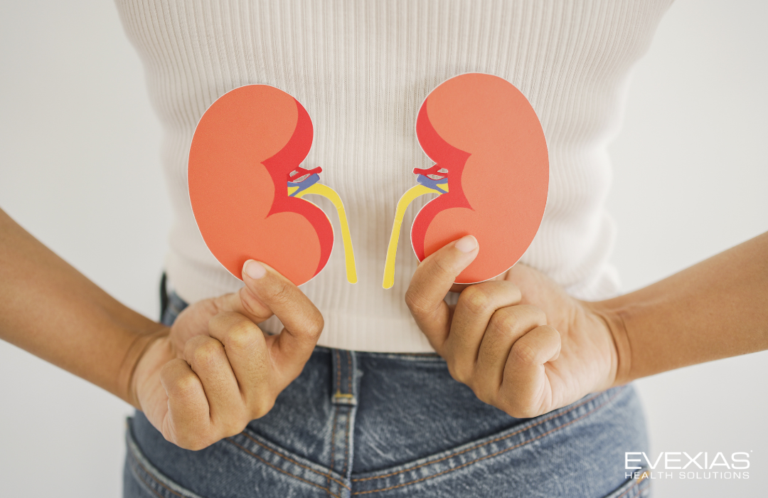How much time do you spend thinking about food every day? Everyone thinks about food when they’re hungry. These thoughts get harder to ignore when the stomach starts to rumble, or lightheadedness sets in. True food noise, on the other hand, dominates all thought. What food should I eat? How soon should I eat? What should I eat for my next meal, and when should I eat it? In fact, it is quite common for people to be thinking about their next meal in the future while eating in the present. This obsession over the what’s and when’s of eating defines food noise.
Drugs like Ozempic and Wegovy have gained a reputation for promoting weight loss either directly or indirectly, but neither drug has anything to do with simply burning fat. Rather, they utilize a gut hormone known as glucagon-like peptide-1, or GLP-1, to quiet food noise by suppressing cravings and convincing the brain that the body has already ingested enough food.
What Causes Food Noise?
Food noise, which is driven by feelings of craving and reward, is largely regulated by hormones in the gut. These specific hormones are known as incretins, and they play a critical role in helping the body process food following ingestion by promoting the release of insulin. GLP-1, the most well-known incretin, is released by the gut into the bloodstream as soon as you start eating. GLP-1 then binds to the vagus nerve, triggering this nerve to send signals to the brain. These specific chemical signals can then bind to the many GLP-1 receptors that exist in the brain, and they promote feelings of satiety. In other words, these signals are what tell the body that it is full and does not need more food at that time.
Various regions of the brain are also responsible for different aspects of appetite. The hypothalamus, which is located near the base of the brain, is responsible for feelings of hunger and even starvation. Meanwhile, the hindbrain is known for promoting feelings of fullness or satiety. Another region near the midbrain has been recognized for regulating the feelings of reward after eating something that tastes especially good. All of these regions are packed with GLP-1 receptors, further encapsulating the strong influence that this hormone wields over appetite and, ultimately, weight.
GLP-1 is also a factor in food noise because different people contain different levels of this hormone. In fact, low levels of GLP-1 have been connected to obesity. How can you constantly fight the urge to eat when your body is convinced that it needs food throughout the day? Food noise is often viewed as a compulsion to eat either specific foods or food in general, which is what differentiates this phenomenon from standard hunger.
How Can You Quiet Food Noise?
Even though GLP-1 was first synthesized in the 1980s, this gut hormone has only recently been used for the purposes of supporting weight loss through appetite management. Synthetic forms of GLP-1, which are known as GLP-1 receptor agonists, were initially developed to treat type 2 diabetes. Eventually, researchers and medical experts recognized that GLP-1 agonists had a positive effect on appetite management and weight loss.
Semaglutide was packaged as Wegovy and Ozempic to be marketed for assistance with weight loss and blood sugar level reduction, respectively. In this same vein, tirzepatide has been packaged as Mounjaro to treat type 2 diabetes and Zepbound to promote weight loss.
These GLP-1 receptor agonists also hold a distinct advantage over GLP-1 in its natural form: durability. Natural GLP-1 only lasts for a minute or two in the body before being broken down by enzymes in the bloodstream. GLP-1 receptor agonists, on the other hand, have shown an ability to survive for longer in the bloodstream. This enhanced durability allows for GLP-1 to have a more lasting effect by silencing compulsive food noise for longer periods of time. In fact, these various forms of synthetic GLP-1 only need to be injected once per week to take effect.
Are There Other Natural Ways to Silence the Noise?
There are other ways you can try to zone out incessant food noise. One method is to adhere to a healthy diet and exercise routine, but that can be easier said than done. Adhering to healthy lifestyle management while blocking out food noise requires incredible restraint and discipline. Even with their ability to quiet food noise, GLP-1 receptor agonists still come with instructions that they be used in tandem with exercise and a healthy diet. That is why GLP-1 receptor agonists are designed to be used by people who qualify as obese and have low levels of natural GLP-1 in their bodies.
However, that does not mean that natural lifestyle management techniques are impossible. They just require time and patience before they truly take hold of the body. People who are using GLP-1 receptor agonists may also need to force themselves to eat healthy foods. These medications are known to suppress cravings for all kinds of food; not just the unhealthy ones. It is still critically important to provide the body with the healthy fruits, vegetables, and grains that make up a well-balanced diet.
It can also be helpful to keep certain triggering foods away from your house. For example, it becomes way more difficult for someone to silence their compulsion to eat salty foods if they always keep potato chips in the house.
Another way to silence food noise is to enjoy regular exercise, especially with friends. Combining exercise with social interactions can make it easier to stick to a healthy routine. Exercise will make you hungry, but you may be less likely to eat something unhealthy when you know you must go jogging or biking the next morning.
Learn More About How to Silence Food Noise
Are you interested in learning more about how to quiet food noise and support healthy weight management? EvexiPEL certified practitioners at EVEXIAS Health Solutions have been trained to help men and women live their best lives by supporting optimal whole body health. To learn more about GLP-1 receptor agonists and other healthy lifestyle management techniques, find the nearest EvexiPEL certified practitioner today.







